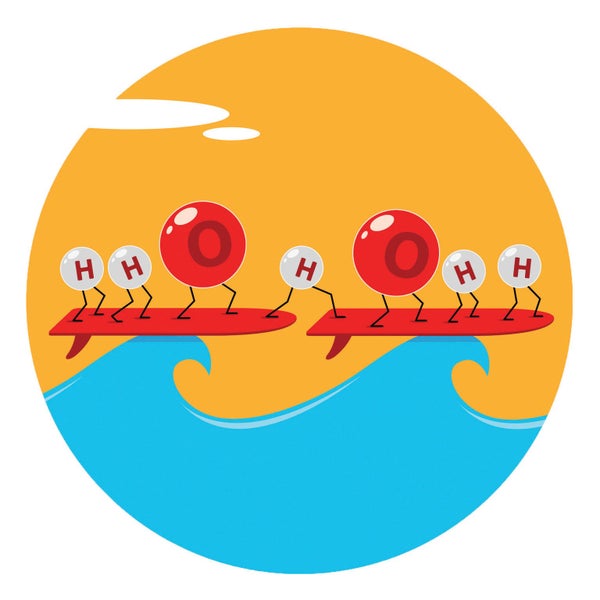To make efficient hydrogen energy technology a reality—from generating hydrogen through electrolysis to next-generation chemical fuel cells—scientists need to know exactly how individual hydrogen atoms move through water.
A neutral water molecule comprises two hydrogen atoms bonded to a single oxygen atom, the entire structure bending to give the molecule a partially positive side and a partially negative side, like a magnet. If you could zoom in on a glass of water, you would see trillions of such molecules, along with some excess individual hydrogen atoms that have lost their electrons (in other words, just protons). For 200 years researchers have theorized that these protons hop from one water molecule to another by attaching to the nearest molecule and kicking off one of the protons already bonded there. This proton then bonds with the next neighbor. Now a team of scientists in Beijing has imaged such particles under a microscope for the first time, helping illuminate how these jumps occur.
Models predicted that this process most often happens in two ways. In one, a proton bonds directly to a single water molecule, turning it from a neutral molecule into a positive ion. Three surrounding neutral water molecules orient so their partially negative sides stabilize this charge. In the other option, the extra proton sits between the negative ends of two neutral water molecules so that each shares the burden of the positive charge.
On supporting science journalism
If you're enjoying this article, consider supporting our award-winning journalism by subscribing. By purchasing a subscription you are helping to ensure the future of impactful stories about the discoveries and ideas shaping our world today.
Researchers were able to verify these orientations through atomic-force microscopy—a technique that generates images by tracing the nanoscopic point of a specialized needle over bumps on a surface. Using this instrumentation, Jing Guo, a chemist at Beijing Normal University, and her colleagues imaged a molecule-deep network of water frozen onto a slip of metal and revealed how extra protons changed that network. Their work was published in Science.
Incredibly sensitive measurements were needed to differentiate between the two water configurations. “The position of protons along the hydrogen bond differed only by about 20 picometers,” Guo says—less than half the length of a hydrogen atom itself. “We are very, very excited to figure out the underlying pictures after long struggles.”
The team found that these two configurations occurred at different frequencies and ratios depending on what kind of metal the water was frozen to. They also used electricity to force water to flip-flop between the different setups. “It’s very astounding that they can [directly] observe these things,” says Thomas Kuhn, a theoretical chemist at Paderborn University in Germany, who was not involved in this work. “It opens the door to study the mechanisms behind [hydrogen generation],” he says. “And maybe out of that, good stuff comes.”
